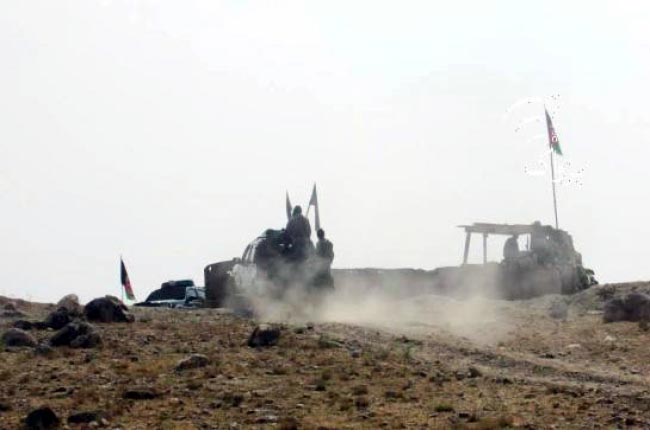One will be shaken up with the tragic incidents resulted from war and violence. Warring factions play highly destructive role and target civilians and soldiers indiscriminately without paying a tinge of heed to humanitarian law. The heart-wrenching stories of the war victims and their painful sufferings will be a stain on the collective conscience. Streams of blood which are oozing from the sliced throats of children and the riddle bodies of women – who have nothing to do with war – will traumatize one to a great extent.
The law of war is neglected and non-combatants are left at the mercy of escalated militancy and radical ideology of fundamental groups. Despite being combated, terrorism mushrooms and militant fighters pose more serious threat to the region. Syrian and Iraqi people are believed to be highly vulnerable to insurgency and bear the brunt of atrocities practiced by the self-proclaimed Islamic State of Iraq and the Levant (ISIL).
With the escalation of war in Aleppo province, a large number of families left their homes to survive the bloody war. More than 65,000 people have been forced to flee fighting in northern Syria, ravaged in recent weeks by dual offensives on the Islamic State of Iraq and the Levant (ISIL) group, the United Nations said. The UN’s humanitarian agency, OCHA, said that tens of thousands of people have left their homes in northern Aleppo province, particularly around the former ISIL stronghold of Al Bab.
Since February 25, OCHA said, another 26,000 people fled violence further east, where Syrian government forces supported by Russian air power have also been waging a fierce offensive against ISIL. It added that the “high contamination” of unexploded bombs and booby traps set by retreating ISIL fighters was complicating efforts to return.
Aleppo province hosts tens of thousands of displaced Syrians, many in camps near the Turkish border. “Daesh [ISIL] was shelling us, the airplanes were hitting us. Our children were terrified. We were barely able to save ourselves,” a 25-year old Syrian woman, who fled the clashes with her two children, is cited as saying.
Worst of all, a large number of people lose their lives by the Improvised Explosive Device (IED). While no organization has estimated how many of the more than 470,000 deaths in Syria are due to IEDs, the United Nations Mine Action Service identifies them as a “grave threat to civilians”. According to its surveys, some 6.3 million Syrians are living in areas affected by explosive weapons incidents.
Similarly, more than 200,000 people have been reportedly displaced as a result of the Iraqi forces’ battle to retake the city of Mosul from ISIL that began in October. In the meantime, medical workers warned that women and children have been exposed to toxic gas near the city. If confirmed, the use of chemical weapons and toxic agents in the fighting will amount to war crimes, the UN has said.
The operation in Mosul was officially launched in October last year. In January, its eastern half was declared “fully liberated”. The Iraqi army is also taking part in the fight for west Mosul, with the 9th Armoured Division advancing through the desert surrounding the city, aiming to cut if off from the ISIL-held town of Tal Afar, farther west.
A flurry of attacks was carried out by the American-led coalition in and around Mosul on Saturday. With the encouragement of the Americans, the Iraqi strategy has been to mount an attack on multiple axes to present the militants with more problems than they can handle. On the other hand, however, Iraqi troops have been spooked by the ISIS drones, which sometimes hover in swarms of three to five. Neither the American nor the Iraqi military has an easy remedy. Trying to jam the drones might interfere with the Iraqis’ own communications, and it is not always easy to shoot them out of the sky.
No wonder, the US President Donald Trump vowed to battle against “radical Islamic terrorism”, and to “eradicate from the face of the Earth.” Now, his administration plans to hold an anti-Daesh (ISIL) summit in Washington on March 21. More than 60 countries are part of the coalition that holds counter- ISIL meetings every three to four months.
It is really disappointing to see that ISIL has involved the world into a protracted war and put many countries into challenge although there has not long passed from its formation. Radicalization is on the rise and terrorist networks breed fear and hatred and violate the rights and dignity of individuals around the world, despite democratic discourses and human rights organizations. There is much to be done by the world to dismantle the terrorist networks and destroy their sanctuaries.
It goes without saying that the Syria’s war between Assad’s regime and his opposition will pave the ground for further militancy. It was the conflagration which changed the Syria into hotbed of radicalism. To mitigate insurgency and safeguard the rights and liberty of innocent people, the world will have to broker an agreement between the warring sides in Syria so that they can defeat ISIL. It is hoped that the international community will stop turning blind eye to human casualties and violation of human rights and humanitarian law. Furthermore, Trump will have to fulfil his commitment about eradicating terrorism.

